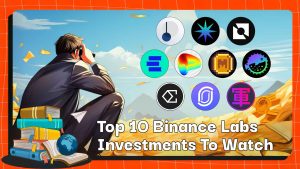Curve Finance: The Ecosystem Is Outstandingly Powerful In DeFi
Curve Finance is well-known to users as a decentralized exchange based on stablecoins. By improving the constant product market maker model and the constant sum market maker model, it can provide users with low slippage, low fees, and low impermanent loss, crypto trading experience.
By designing the VeToken model, Curve Finance has attracted major project parties to accumulate veCRV and compete for the governance rights of Curve, striving to have power and influence on Curve DAO, and ultimately provide higher benefits for its users, becoming the protocol representative A model of monetary economics.
At the same time, it also drives the growth of several related ecological agreements, such as Convex, forming a virtuous value cycle of the project ecology. Curve Finance also plans to issue stable coins and continuously expand the ecological territory to encourage the sustainable development of the ecology, and it still has unlimited potential in the future.
Introduction to Curve Finance
Founded by Michael Egorov and launched in January 2020, Curve Finance aims to provide a decentralized exchange (DEX) built with an automated market maker (AMM) architecture, focusing on stablecoins (USDT, USDC, DAI), synthetic assets/derivatives/anchor assets (wBTC, renBTC, stETH), etc. At present, in addition to taking Ethereum as the main business position, it is also deploying multi-chains such as Fantom, Polygon, Avalanche, Arbitrum, and Optimism.
Curve Finance created Curve DAO in August 2020 and issued the native token CRV. After that, the protocol Total Value Locked (TVL) began to rise steadily, and once became the largest decentralized exchange of TVL. It once exceeded $24 billion. According to DeFiLlama’s data, after a year of turmoil in the entire encryption world, the TVL currently locked in the protocol is still at the forefront of all major DeFi protocols, at about $4.1 billion, and the recent daily trading volume is 200 million U.S. dollars.
Curve was originally designed for stable asset transactions. In its original white paper StableSwap – efficient mechanism for Stablecoin liquidity, Curve’s AMM strategy was introduced, allowing traders to quickly trade between stablecoin pairs with less cost and slippage.
Curve Finance ecosystem
Many people still simply understand Curve Finance as a stable currency trading market. In fact, Curve has developed into a simple and huge asset liquidity-as-a-service protocol driven by DAO governance. In order to reduce liquidity costs, many projects will actively embrace the Curve ecosystem, all of which stem from Curve’s textbook-like token economics.
CRV token
Since August 2020, Curve Finance has started the road to decentralized governance by launching the DAO. Like other DAOs, on August 13, 2020, Curve launched the native token CRV as the governance token of Curve DAO, with an initial issuance of 1.3 billion, and started the initial pre-mining reward distribution activity. Tokens will be unlocked linearly over one year.
The CRV token gives token holders voting governance rights, and liquidity providers can also earn CRV tokens based on the value of their share and the length of time it has been in the pool. Since then, in September 2020, the governance token dividend mechanism has been launched, distributing 50% of the transaction fee to users who deposit CRV into the governance contract lock-up.
The total amount of CRV is 3.03 billion, and the total amount of CRV released so far exceeds 1.5 billion, and the average daily release of CRV is about 1.08 million. The distribution is as follows:
- 62% to liquidity providers, 5% to early LP providers, unlocked linearly within 1 year
- 30% to shareholders, unlocked linearly within 2-4 years
- 5% combustible reserves, as a community reserve
- 3% to team members, unlocked linearly over 2 years
The $CRV token can play the following roles within the Curve ecosystem:
- Governance voting: lock CRV to acquire veCRV to participate in the governance of the protocol through a time-weighted voting mechanism.
- Value capture mechanism: Facilitate various liquidity pools through the veCRV governance voting mechanism.
- Lock-in Incentives: As a lock-in mechanism for liquidity providers to earn value over time.
- Fee Burn: Used to burn transaction fees to reduce inflation.
veCRV token
Curve Finance designed the famous VeToken (Vote-Escrowed Tokens) model. Locking CRV can obtain voting tokens veCRV according to time weighting. The longer the locking time, the more veCRV you can get. 1 CRV can be locked for 4 years to get 1 veCRV, while locking for one year can only get 0.25 veCRV. veCRV cannot be transferred, so the only way to get veCRV is to lock CRV. Currently 48.94% of CRV has been locked, with an average lock-up period of 3.6 years.
The veCRV obtained by locking CRV is mainly used for the following three purposes:
Transaction fee
The other 50% of the 0.03% Curve Finance transaction fees are distributed to veCRV holders. Give back to veCRV holders by repurchasing the LP Token 3Crv of the Curve 3Pool stable pool (ie DAI+USDC+USDT fund pool).
Boosted rewards
If holders of veCRV provide liquidity for the protocol at the same time, they will receive a liquidity reward of up to 2.5 times according to the pledge period, thereby increasing the overall income of providing liquidity. If LPs provide liquidity in 3pool, they will initially receive 0.22% APR, and if veCRV is locked, the reward can be increased to the limit of 2.5 times, which is 0.55%.
Governance vote
veCRV has the power to change the “Gauge Weights,” and veCRV allows holders to participate in community voting to allocate CRV reward emissions. The Curve Finance project hosts a number of liquidity pools, and there is a fixed amount of $CRV tokens available to reward these liquidity pool providers. Which pool gets the most CRV rewards depends on the votes made by veCRV holders in the DAO. As an individual, veCRV allows to influence CRV income through voting power.
In addition, holding veCRV may also obtain potential airdrop opportunities for other cooperative projects. We can use the following picture to represent the relationship between the main tokens of the Curve ecosystem.
Among them, governance voting rights are the most important function of veCRV. For stablecoin projects, if the stablecoin assets fluctuate violently or the transaction depth is insufficient, the foundation of the project will be challenged, and the business will decline accordingly. Therefore, the project party must find a way to make the market in the place with the best transaction depth and the best stability effect, so as to meet the transaction needs of maintaining low slippage even under huge transactions.
At present, the best DEX for market making is Curve Finance. To enter Curve’s core liquidity pool, certain conditions must be met through community voting: at least 2,500 veCRV are required to initiate a proposal (equivalent to locking 10,000 CRV for one year), more than 30% of veCRV participation, more than 51% support rate. In addition, each mining pool’s liquidity incentives on the Curve Finance platform will be determined by its veCRV voting rights. In order to increase their annualized income, each protocol has to accumulate veCRV and compete for Curve Finance liquidity incentives.
Conclusion
Despite the current market volatility, Curve Finance is still the top decentralized exchange at the forefront of TVL, and it is still expanding its ecological territory. It is expected to keep pace with the broader DeFi industry in the future.
DISCLAIMER: The Information on this website is provided as general market commentary and does not constitute investment advice. We encourage you to do your own research before investing.
Join us to keep track of news: https://linktr.ee/coincu
Website: coincu.com
Harold
Coincu News
























